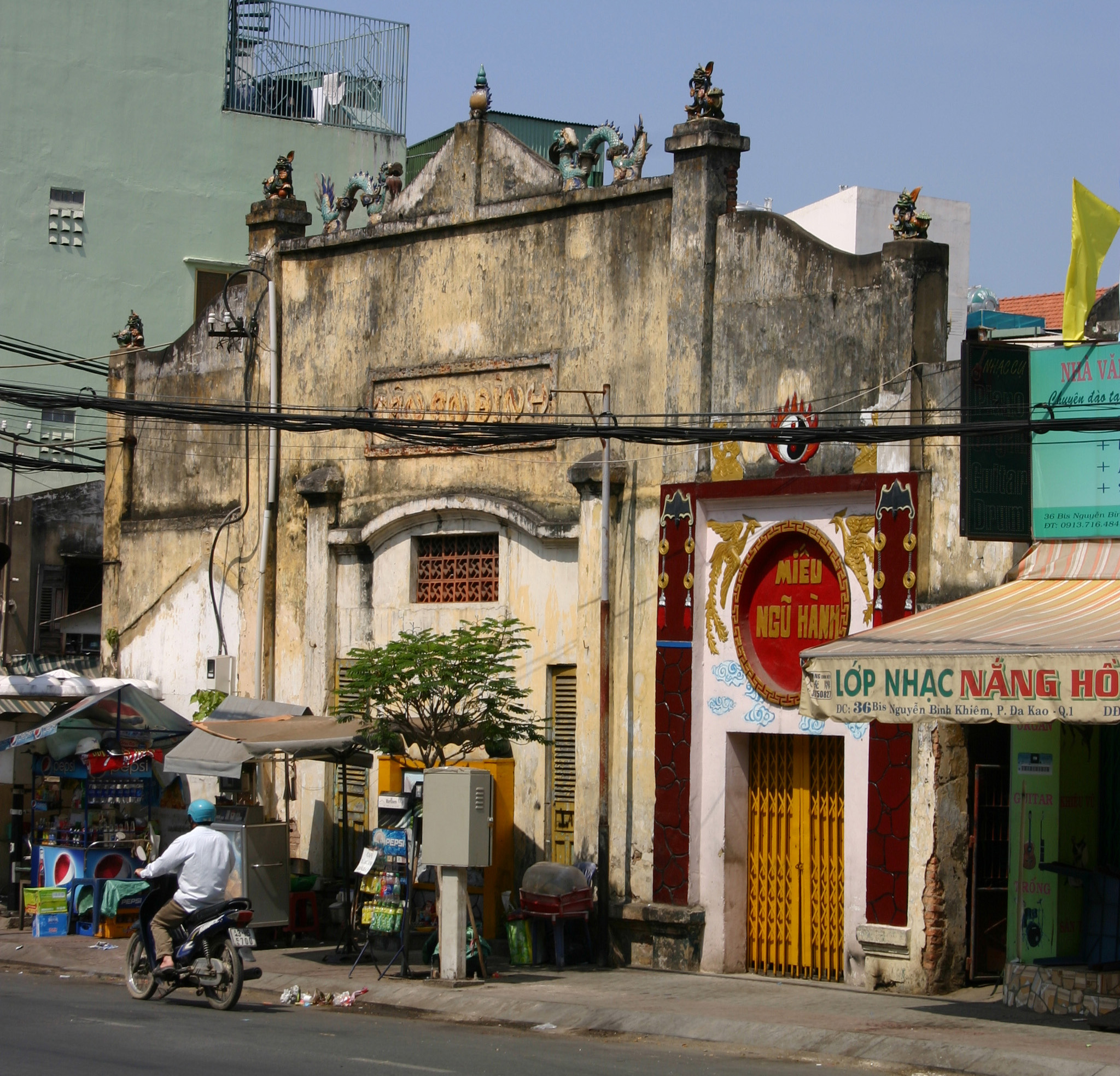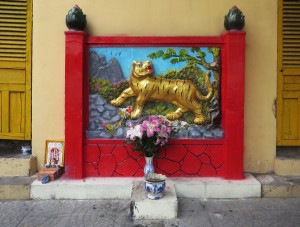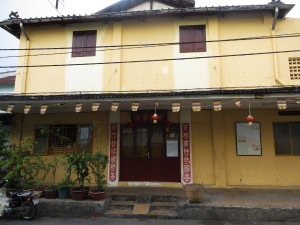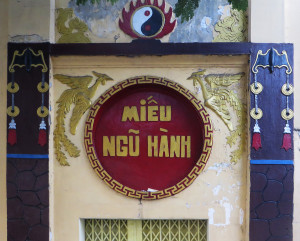
The Đình Tân An at 26 Bis Nguyễn Bỉnh Khiêm in Đa Kao, pictured in early 2011 before it was restored
This article was published previously in Saigoneer http://saigoneer.com
With so many old buildings being destroyed in the name of development, it’s encouraging to learn that one of the city’s most ancient communal houses, the Đình Tân An at 26 Bis Nguyễn Bỉnh Khiêm in Đa Kao, has recently been given a second chance.
According to Trịnh Hoài Đức’s Gia Định thành thông chí (嘉定城通志), Tân An village was set up in 1818 as part of the tổng (canton) of Bình Trị, in Bình Dương district. The village communal house is believed to have been inaugurated soon after, though the current two-storey building dates from 1909, when King Duy Tân (1907-1916) issued an official nomination (sắc phong) consecrating it as a sanctuary for the worship of the Thành hoàng bổn cảnh or tutelary gods of Tân An village.

A tiger stele in front of the Đình Tân An
Despite being located very close to the 1837 Gia Định Citadel walls, the communal house survived the destruction of the 1859 French invasion. However, in the 1860s, its front yard and outer gate were lost to colonial road construction. The entire building was refurbished in 1931.
Like many southern communal houses, the Đình Tân An combined the worship of the village deities with the veneration of founding and later ancestors (tiền hiền and hậu hiền) and of feminine deities with a creative function, such as the Tư Vị Thánh Nương Nương or four “Holy Mothers” – Mẫu Thượng Thiên (goddess of the upper sky), Mẫu Thượng Ngàn (goddess of the highlands), Mẫu Thoải (goddess of the waters) and Mẫu Địa (goddess of the earth) – as well as the goddesses of the five elements (Ngũ hành). From an early date, the latter were worshipped in their own separate temple at the front of the building.
In total, the Đình Tân An is said to have received four sắc phong from the Nguyễn dynasty court, although only one granted by King Tự Đức (1847–1883) has survived.

A side view of the Đình Tân An
After 1975, lacking a maintenance budget, the old communal house gradually fell into disrepair. The main hall (chính điện) upstairs with its principal shrines continued to be used by local elders, but by the 1990s, the ceremonial space (võ ca) on the ground floor was in such poor condition that the annual Kỳ Yên ceremony could no longer be celebrated there. Đa Kao Ward People’s Committee subsequently decided to lease the entire downstairs space to outside organisations.
In July 2011, Người Lao Động (Worker) newspaper ran a series of articles entitled “Xẻ thịt đình thần” (Cutting up temples), drawing the public’s attention to the sad state of many of the city’s old temple buildings. Considerable column space was given to the Đình Tân An, the ground floor of which had been “chopped to pieces” to create company store rooms, a weight training room and a women’s health education centre.
The article clearly had the desired effect, because in the following month, leaders of the Hồ Chí Minh City People’s Committee directed the Ward to resolve this embarrassing problem. Then in February 2012, the communal house received a grant of 500 million đồng for its restoration.

The Ngũ hành (five elements) goddesses are worshipped in their own temple at the front of the building
After the work had been completed, a solemn Kỳ Yên ceremony was arranged for the morning of the 7 April 2012 (the 17th day of the 3rd lunar month). However according to a follow-up report by Người Lao Động, participants arrived only to find the võ ca still packed full of equipment belonging to the former tenants!
Approached by the newspaper to comment on the fact that the communal house had still not been returned to the local people, Mrs Nguyễn Thị Liên, Vice Chairman of District 1 People’s Committee, commented: “The đình is a place for people to perform religious rites and worship the gods; as for all other activities, such as weight training and company storage, this is a problem which needs to be overcome. The Ward should also review the use of the đình for women’s health education. All activities which adversely affect the đình are unacceptable.”
That finally did the trick. The võ ca was cleared, and since that time, Tân An village communal house has resumed its traditional role as the heart and soul of the local community in this, one of the busiest parts of town.

Another side view of the Đình Tân An

The Đình Tân An sits on the junction of Nguyễn Bỉnh Khiêm and Nguyễn Văn Thủ
Tim Doling is the author of the guidebook Exploring Saigon-Chợ Lớn – Vanishing heritage of Hồ Chí Minh City (Nhà Xuất Bản Thế Giới, Hà Nội, 2019)
A full index of all Tim’s blog articles since November 2013 is now available here.
Join the Facebook group pages Saigon-Chợ Lớn Then & Now to see historic photographs juxtaposed with new ones taken in the same locations, and Đài Quan sát Di sản Sài Gòn – Saigon Heritage Observatory for up-to-date information on conservation issues in Saigon and Chợ Lớn.

